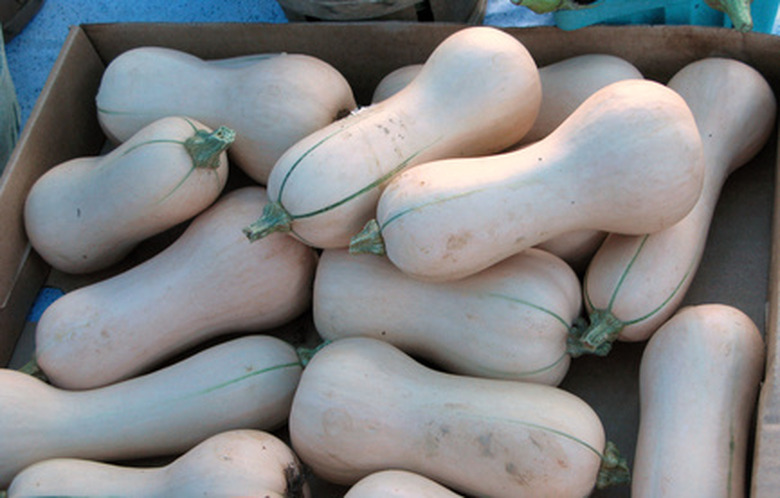How To Ripen Butternut Squash
Squash is a common sight in many gardens. Bad weather, frost and other uncontrollable circumstances can cause your butternut squash not to ripen on the vine properly. When this happens, many people just toss the unripened squash. Instead, try ripening the butternut squash in your home.
Step 1
Cut the unripened butternut squash from the vine. Leave at least 3 inches of the vine attached to the squash. Use the vine instead of the squash when handling the vegetable.
- Squash is a common sight in many gardens.
- Leave at least 3 inches of the vine attached to the squash.
Step 2
Mix 6 parts water with 1 part household bleach, wipe the squash with the solution and allow to air dry. The water-bleach mixture will help prevent the squash from rotting.
Step 3
Place the butternut squash in a sunny location in your home. Squash must have sunlight in order to ripen. If left with no sunlight, squash will remain unripened.
Step 4
Turn the squash over periodically so that all sides of the vegetable get adequate sunlight to ripen. The green lines on unripened butternut squash will fade and the squash will have a pale or light orange color when the vegetable is ripe.
- Mix 6 parts water with 1 part household bleach, wipe the squash with the solution and allow to air dry.
- The water-bleach mixture will help prevent the squash from rotting.
Ripen Butternut Squash After Picking
It might look like a large, wooden pear, but the butternut (Cucurbita moschata) is a member of the cucumber family. Butternut squash tastes better and lasts longer when allowed to ripen on the vine, but if winter arrives early, you can harvest early and try using curing techniques to improve the length of storage. Unlike tender summer squash varieties, winter squashes develops a thick skin that must be removed before eating. Like cucumbers (Cucumis sativus), winter squash require regular irrigation, especially in hot weather. Any drooping squash plants should be watered immediately and will usually recover nicely. The morning before the frost, clip the squashes from the vine leaving several inches of stem. You can try curing unripe butternut squash by storing it at 80 to 85 degrees Fahrenheit and 80 to 85 percent humidity for 10 days. Since curing does not generally improve the flavor of the squash, it may not be worth the trouble unless the squash is very close to ripe.
- It might look like a large, wooden pear, but the butternut (Cucurbita moschata) is a member of the cucumber family.
- Butternut squash tastes better and lasts longer when allowed to ripen on the vine, but if winter arrives early, you can harvest early and try using curing techniques to improve the length of storage.
Things Needed
- Pruning sheers
- Water
- Bleach
- Cloth
